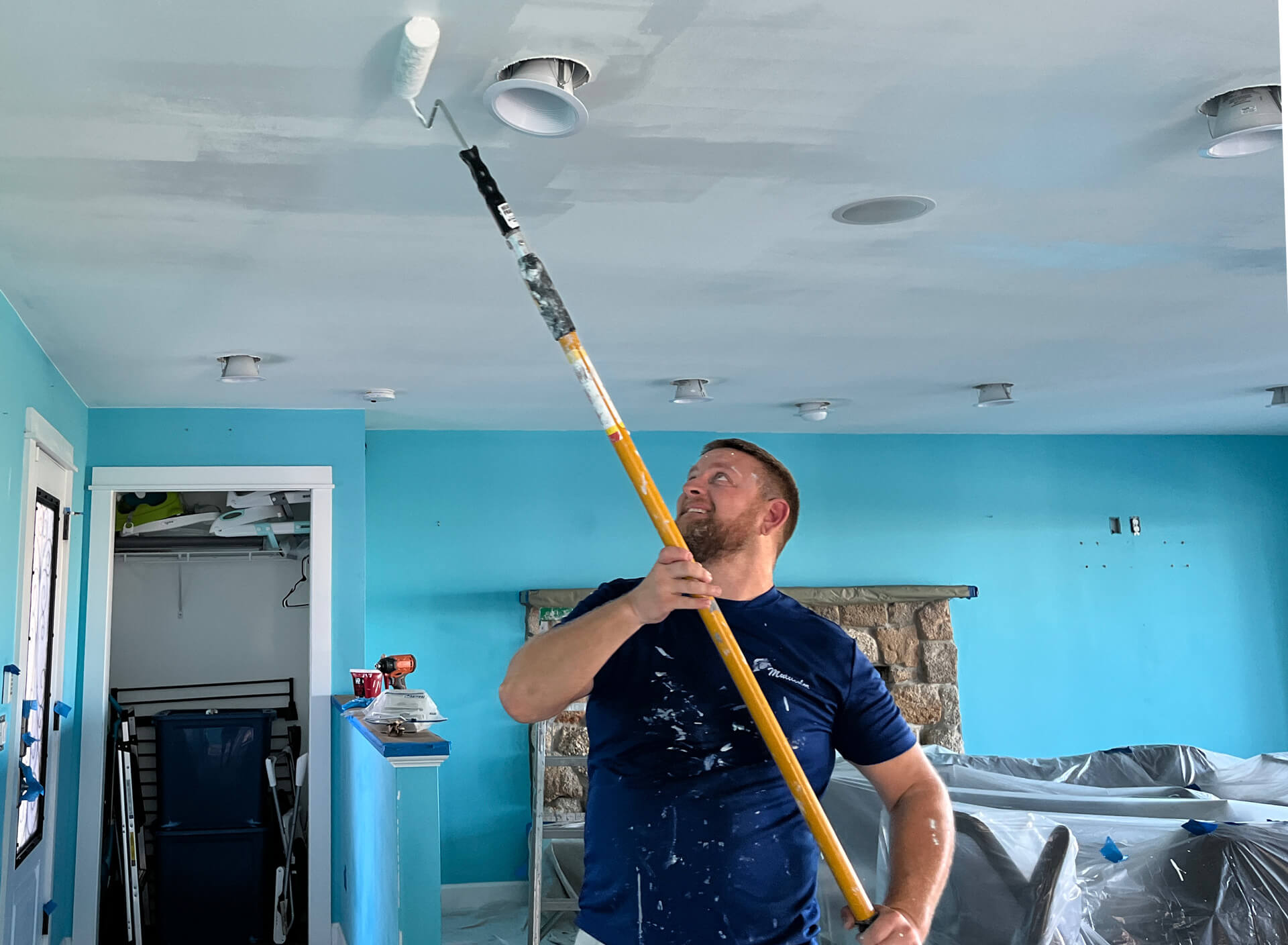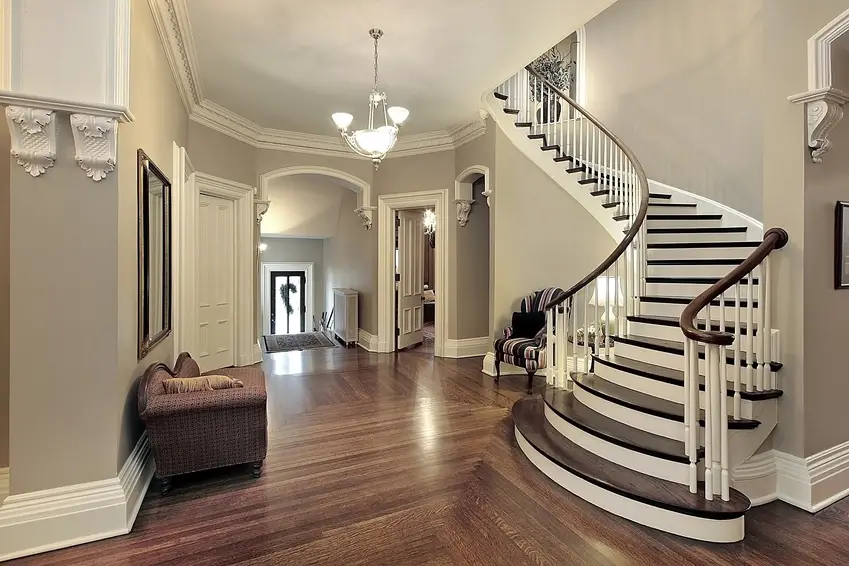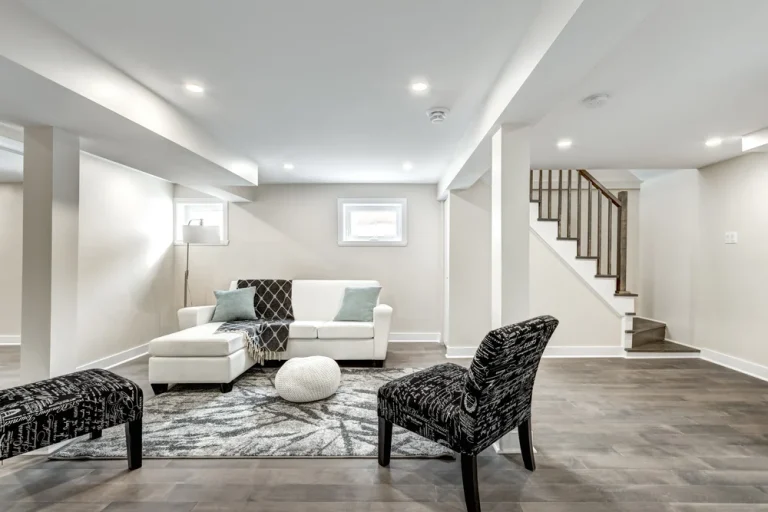How Long To Paint A House Interior
Painting the interior of your home can be a big job, but it can also be an enjoyable and rewarding experience. Knowing how long it will take to paint your home interior can help you plan and budget for the project. Generally, painting a house’s interior can take anywhere from three days to a week, depending on the size of the house, the number of coats of paint required, and the type of paint used. With careful planning, the right tools, and some help from friends, you can have your house interior looking fresh and new in no time.
Preparing the Interior for Painting
Painting the interior of a house requires thoughtful planning and preparation. Before you begin, you need to make sure that the walls are clean, dry, and free of any defects that could cause the paint to peel or look uneven. This can include sanding, patching, and smoothing out any rough edges. The right preparation will ensure a professional paint job that will last for years.
When preparing the interior of a house for painting, you should also take into consideration the materials you’ll be using. Different paints require different preparation techniques. For example, latex paint requires more preparation than oil-based paint as it needs to be sealed before applying.
Additionally, make sure that you have the right tools and materials for the job. This includes brushes, rollers, and drop cloths. You should also wear protective clothing and a face mask to protect yourself from any fumes or dust.
Finally, before you start painting, you should make sure that the area is well-ventilated. This can help reduce the risk of fumes or dust particles settling on the walls or furniture.
Selecting the Right Paint and Supplies
When it comes to painting the interior of a house, the right supplies can make all the difference. To ensure the paint job is done correctly and efficiently, it is important to select materials that are of the highest quality and appropriate for the job. The most important supplies to consider include paint, primer, sandpaper, drop cloths, painter’s tape, brushes, rollers, and a ladder.
Paint is the most important supply to consider when painting a house interior, as it will be the most visible element of the job. A good quality paint will last longer and provide better coverage than low-quality paint, so it is important to select a product that is appropriate for the job. For most projects, semi-gloss paint is a great choice as it is highly durable and easy to clean.
Primer is also an important supply to consider, as it helps to prepare the surface for painting and can improve the overall durability of the paint job. Sandpaper can also be used to smooth out any imperfections in the surface before painting, while drop cloths can protect the floors and furniture from any spills or drips of paint.
Painter’s tape is also essential for protecting the edges of walls, ceilings, and trim from unwanted paint. Brushes, rollers, and a ladder are also necessary supplies for a successful paint job, as they will help to ensure that the paint is applied evenly and accurately.
By selecting the right paint and supplies, a homeowner can ensure that their interior painting project is done quickly and effectively. With the right materials, it is possible to complete a paint job in a relatively short amount of time, so it is important to choose the best supplies for the job.
Applying Primer and Undercoat
When it comes to painting a house interior, applying primer and undercoat is an integral part of the process. Primer and undercoat are essential layers that provide the base for a successful paint job. Applying primer and undercoat can be a time-consuming, labor-intensive process. The amount of time it takes to apply primer and undercoat will depend on the type of paint you are using, the size of the room, and the number of coats you are applying.
When painting a house interior, you should start by preparing the walls and cleaning them with a mild detergent. Once the walls are dry, you can apply the primer. Primer helps the paint to bond with the walls, and it prevents the paint from cracking or peeling. Depending on the paint you are using, you may need to apply two coats of primer. Once the primer is dry, you can then apply the undercoat. The undercoat helps to hide any imperfections in the walls and provides a smooth surface for the paint. Generally, it takes two to three coats of undercoat to achieve the desired results.
Choosing Wall Paint Colors
When it comes to painting the interior of your house, there are many factors to consider, from the type of paint you’ll use to the color scheme you’ll choose. One of the most important decisions to make is the color of the walls. Different colors can evoke different feelings, so it’s important to choose the right one for your space.
When selecting colors for your interior walls, consider the existing furniture, flooring, or any other fixtures you may have in the room. Make sure the colors you choose complement the existing décor. It’s also important to think about the atmosphere you want to create; choose colors that will help set the mood you’re going for.
Light colors will create a sense of space and openness, while darker colors can make a room feel cozier. If you’re looking for a bolder look, consider incorporating accent colors. These can be used to break up a single color scheme or to draw attention to a certain area of the room.
Painting the interior of your home is a great way to update the look and feel of the space. Choosing the right wall paint colors can be the difference between a space that looks drab and one that looks vibrant and inviting. Consider the existing décor, the atmosphere you want to create, and any accent colors you may want to incorporate to achieve the perfect look.

Painting Techniques for a Professional Finish
Painting the interior of a house can be a daunting task, but with the right techniques and materials, you can achieve a professional finish. The length of time it takes to paint a house interior largely depends on the type of paint, the type of surface, and the amount of prep work required. For walls that are in average condition, it typically takes two to three days to prepare and paint the entire interior of a house.
To achieve a professional finish, it is important to use quality paint and the correct tools. A good quality brush or roller is essential for a smooth finish, and a paint sprayer can be used to speed up the application process. Before painting, it is also important to prepare the surfaces by removing furniture, patching holes, and sanding down the walls. This will ensure the paint adheres to the walls and provides a high-quality finish.
In addition, the type of paint used will also affect the time it takes to complete the job. Latex paints are fast drying, making them great for busy households, while oil-based paints are slower drying but provide more durability and a longer-lasting finish.
By following these tips, you can achieve a professional finish in the shortest possible amount of time. With the right materials and techniques, you can ensure the job is done right and the results will last.
Handling Trim and Moulding
Painting trim and molding can be a tedious task that requires patience and precision. Before you begin, make sure to remove all furniture and wall decorations from the room so you can adequately paint around them. If you’re painting the trim and molding a different color than the walls, you’ll need to use painter’s tape to protect the wall from any accidental paint splatters. Before you start, clean the trim and molding with a damp cloth to remove any dirt and dust. Once the trim and molding are clean and dry, you can begin painting it with your chosen color. Depending on the size of your room and the number of trim and molding pieces, it can take anywhere from a few hours to a few days to finish. Allow the paint to dry completely before removing the painter’s tape and adding the furniture back into the room.
Cleaning Up After Painting
Painting a house interior can be a messy job, but cleaning up after the job is an important step. Proper cleaning can help ensure that the paint job looks its best and lasts for as long as possible. The first step in cleaning up after painting is to remove any painter’s tape that was used. This should be done carefully and slowly so that you don’t pull off any paint. Then, all of the equipment that was used, such as brushes, rollers, and pans, should be washed and stored properly. Finally, the floors should be vacuumed and wiped down to remove any paint dust and splatters that may have accumulated during the painting process. Proper cleaning can help ensure that the paint job looks its best and lasts for as long as possible. Therefore, it is important to take the time to clean up after painting a house interior.
Maintenance and Touch-Ups
The best way to keep your home’s interior looking its best is through regular maintenance and touch-ups. While the initial painting job may take several days, a few hours spent each season can make a huge difference in the longevity of your paint job. It is important to inspect your walls for any chips or cracks and to address these promptly. Minor repairs to the walls can prevent the need for a full interior repainting. Additionally, touch-ups to the walls can help maintain the vibrancy of the paint color. For more heavily trafficked areas, such as the kitchen, it is a good idea to do a quick touch-up every six months to keep the walls looking their best.
Conclusion
Painting a house interior can take anywhere from a few hours to a few days, depending on the size of the house, the number of rooms, and the complexity of the job. Professional painters are typically able to finish a job in a shorter amount of time than DIYers, although preparation and proper techniques are essential for both to achieve good results.







